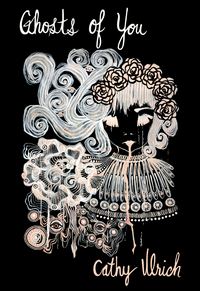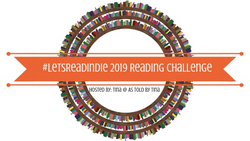 |
Ghosts of Youby Cathy Ulrich eARC, 150 pg. Read: September 23-30, 2019 |

This collection of 31 pieces of flash fiction shouldn’t work. This is probably not the sentence that the author and her publicist want me to start with, but hear me out. It shouldn’t, but it does.
Why shouldn’t it work? For starters, each story has essentially the same title. “Being the Murdered _____.” Earle Stanley Gardner got away with it, as did Lilian Jackson Braun—but I can’t see how anyone else does. Add Ulrich to the list.
Secondly, each story starts with the same sentence:
The thing about being the murdered [word/phrase from title] is you set the plot in motion.
Outside of “Once Upon a Time,” that should not be done (it’s arguable that it shouldn’t be done there, either). But it does work.
From these nearly identical launching pads, Ulrich spins 31 incredibly distinctive tales about what happens after various women are murdered. I should probably clarify a bit, about what I mean about the various women (and the blanks above). These stories focus on people like the murdered Girl, Wife, Lover, Homecoming Queen, Babysitter, Mother, Extra, Jogger—mostly the kinds of women you read about/see in the beginning of a murder mystery. Ulrich also goes for some unexpected types, e.g.: Politician, Mermaid, Muse, Chanteuse (she probably deserves extra points for using that word in the Twenty-First Century), and Taxidermist.
Their murders change the lives of those around them, those who knew them, knew of them, investigated their deaths both immediately and for years to come.
Now, as the word “plot” in the topic sentences indicates, these are primarily reactions to/depictions of/commentaries on the way that the homicides of fictional women are portrayed in Crime Fiction (or even “Literary” Fiction), TV, Movies, etc. I think it has a lot to say about those depictions, but I think there are a lot of weaknesses to Ulrich’s approach, too. Too often, her critiques are overgeneralized, inflammatory and outdated—while retaining a kernel worth chewing on.
Thankfully, the book is about more than that (or I’m not sure I’d have bothered to finish it). I frequently felt like my reaction to the stories was not what it was intended to be. When she’s telling a story (as abbreviated as they are), describing human reactions to situations that “tragic” doesn’t quite begin to apply to—these pieces shine. For someone who shuns self-help books, I’ve read a lot about grief in the last couple of years—these stories contain some of the best portrayals of it in all its varied expressions—that I can remember. If your heart doesn’t break a little at least twice while going through this collection, you need to go listen to some community singing in Whoville, so they can help yours grow.
Beyond that, there’s the obvious strength of the economy of words here—these stories are lean, without a wasted word, and are pound-for-pound some of the most effective stories I’ve read this year.
As with any collection, there are stronger pieces and weaker pieces—some that will satisfy some and other readers will be stupefied by or indifferent to the same ones. I do think there’s a better hit to miss ratio in this collection than I’m used to. For what it’s worth, “Being the Murdered Bride”, “Being the Murdered Student” and “Being the Murdered Mama” were the high-points for me.
While these are all very different (Ulrich almost never plays the same note twice), I don’t recommend reading too many in one sitting (I limited myself to three at a time, for example)—beyond that, you risk robbing them of their impact.
I heartily recommend this collection that works far better than it should. It’ll cause you to stop and think, stop and feel, and hopefully change your perspective on a few things.
Disclaimer: I received this eARC from the author via Lori @ TNBBC Publicity in exchange for this post—thanks to both for this.
![]()




Read Irresponsibly, but please Comment Responsibly